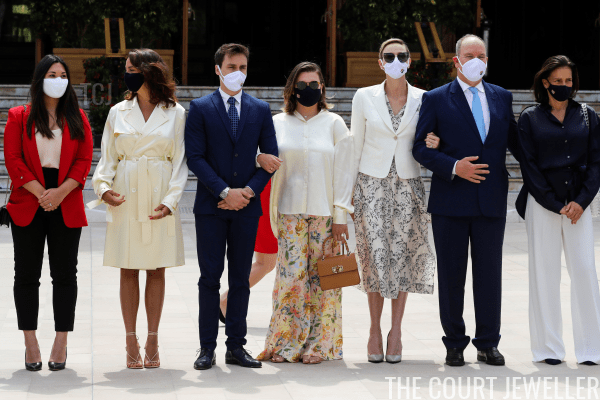
Will it be the rubies or the poppies???
 |
| Chris Jackson/Getty Images, INTERFOTO/Alamy |
The Danish Ruby Parure Tiara vs. The Golden Poppies
 |
| Chris Jackson/Getty Images |
This tiara began its life as a series of hair combs, purchased by Jean-Baptiste Bernadotte for his wife, Desiree, to wear at Napoleon’s coronation in 1804. When Bernadotte was elected King of Sweden, the rubies became royal jewels. The combs were made into a bandeau by Queen Alexandrine of Denmark, who had received them from her mother-in-law, Lovisa of Sweden. Queen Ingrid turned the bandeau into a grand wreath tiara, which is now worn by Crown Princess Mary of Denmark.
 |
| INTERFOTO/Alamy |
Queen Margrethe II of Denmark herself commissioned this unusual headpiece, which was made in 1976 by Arje Griegst. The poppies are made of gold and attached to a comb that sinks into the wearer’s hair, allowing the flowers to scatter across Margrethe’s locks. The flowers are also studded with gems — including aquamarines, moonstones, and opals — and insects. So far, Margrethe has been the only wearer of the piece, which is part of a parure that also includes earrings and a necklace.
More Danish tiaras coming your way this afternoon!





























